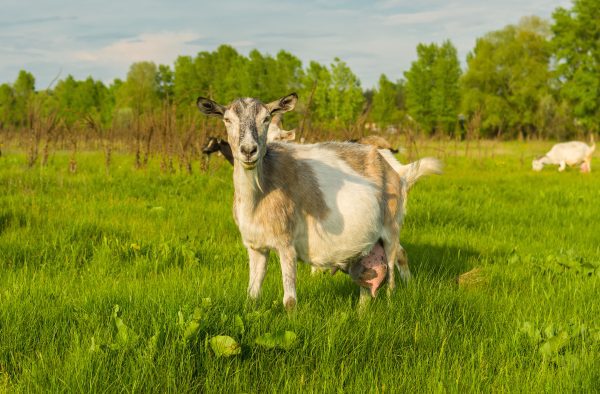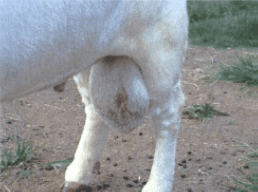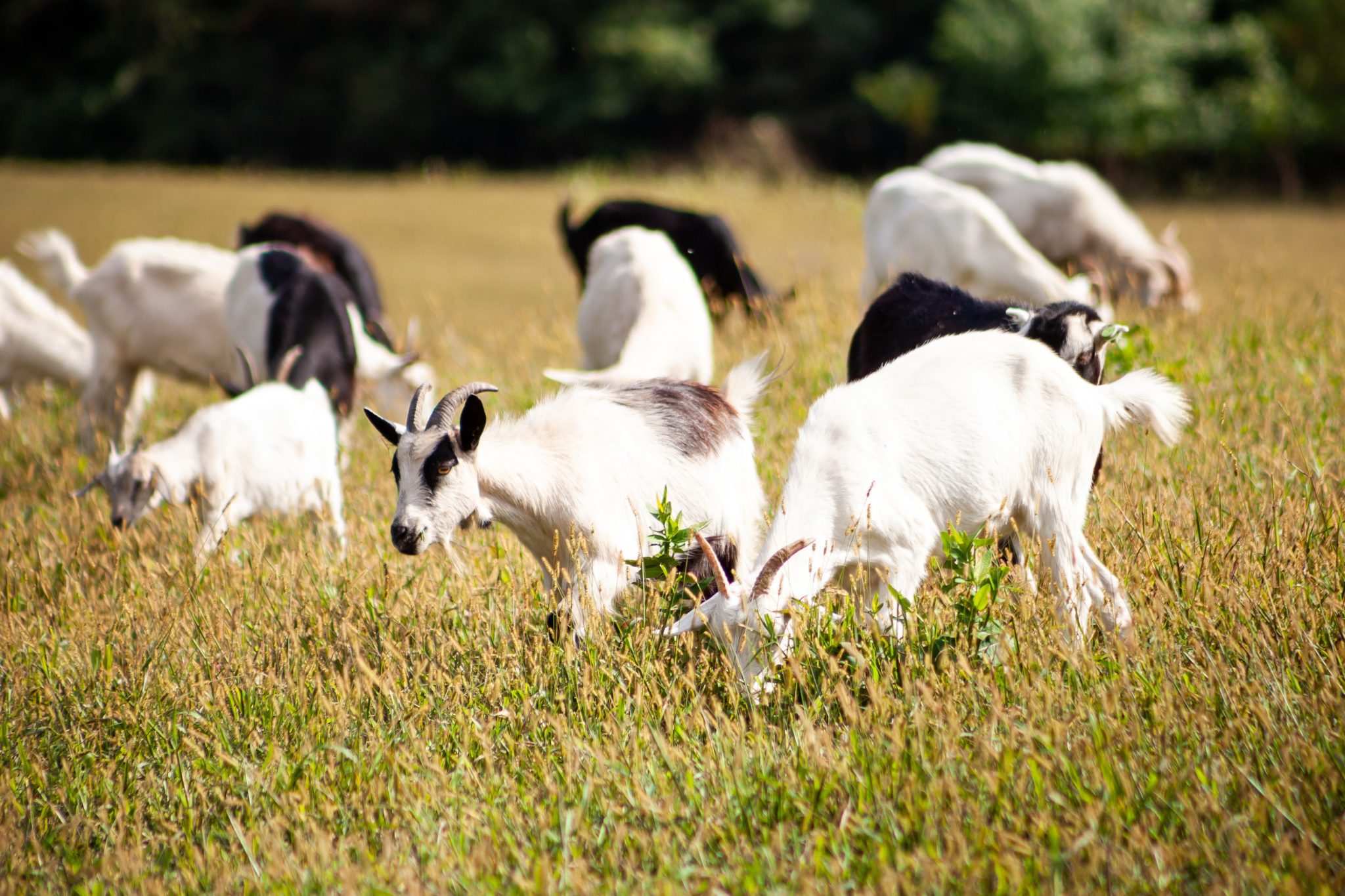Animals

Animal selection involves standards or criteria used to identify desired breed traits that parent animals can pass to their offspring. The goal of animal selection is to identify does and bucks that will improve herd hardiness and productivity. During the selection process goat producers must focus on reproductive, growth, and carcass characteristics.
Common goat selection tools are:
- General visual appraisal
- Pedigree data
- Performance data
- Genetic animal evaluation
- Respective breed standards
- Animal records
Selecting Replacement Doelings
Identifying replacement doelings (female goats less than a year old) in a breeding program is a multi-step process based on breed, season of birth, and management practices.
- First screening. The first screening is based on weight and development when doelings are between 3 to 4 months of age. They are selected from their contemporary group in a herd and kept for further evaluation. At 6 to 8 months of age, doelings are re-evaluated based on growth and development within their contemporaneous group. Only doelings that have grown well and are structurally sound should be kept as replacement stock.
- Further selection. Further selection is made at the yearling stage when the females are ready to breed. In this stage, selection is based on cyclicity and pregnancy. Young does that do not express signs of estrus (heat) or do not become pregnant are culled.
- Final selection. The final selection is made after young does have weaned their first kids. Replacement prospects are determined according to whether the does adequately raised their kids. This evaluation practice is only valid when doelings are managed in a similar manner.
Other Traits to Consider
When selecting replacement doelings there are other important traits to consider.
- Females must express femininity and maternal traits.
- Good structural conformation—such as good feet and legs—is important.
- The vulva must not be infantile. A small vulva with a tuff of hair is a sign of intersexuality.
- The length of the upper jaw should be equal with the lower teeth touching the superior dental pad.
- Mouth malformation will lead to difficulty eating efficiently. This trait can also be transmitted to offspring.
- Desirable replacement females will exhibit a greater average daily weight gain during development in comparison to members of their contemporary group.
Breeding Does
The maintenance of mature breeding does should be based on reproductive performance. Does are expected to wean kids annually. A doe should also exhibit good structure. The udder must be of good structure, not pendulous. It must also have good ligaments, with one functional teat on each half, to facilitate nursing of the kids. Having oversized teats is a cull factor.
Other Valuable Doe Traits
- Capability of breeding with no more than two services (rate to achieve pregnancy) required to conceive in a breeding season
- Ability to carry out a pregnancy to term
- Good milk production, which is indicated by the weaning weight of the kids
Detecting Reproductive Problems
A goat production system should rely on does that exhibit excellent reproductive performance. These does are able to reproduce, raise, and wean their kids with low input cost. The reproductive efficiency of a goat herd is determined by the kidding and weaning rates in a herd. Another important trait is the prolificacy or the ability to deliver multiple kids. Goats should have a weaning rate of 1 kid per year. A rate of 1.5 kids per year is a good herd goal. The percent herd prolificacy can be calculated by the total number of kids born over the total number of does kidded in a season x 100:
percent herd prolificacy = number of kids born / number of does kidded x 100
percent herd weaning rate = number of kids weaned / number of does mated x 100

Cull does with poor conformation of the udder and teats and/or with mastitis.
Criteria for Culling Does
- Cull poor reproductive performers with low profitability.
- Avoid does that present frequent prolapsed uterine, or the eversion of the internal uterine layer to the outside the doe’s vagina.
- Eliminate does that have poor or low milk production and are incapable of rearing kids to weaning.
- Remove does that fail to maintain adequate body condition.
Selecting Breeding Bucks or Herd Sires
A herd sire or buck is the most important animal in the herd. The buck contributes 50 percent of the genetic makeup of every kid born and is a key factor in determining the overall pregnancy rate of the herd. The choice of quality breeding stock is an important factor and fundamental in a meat goat operation. A replacement herd sire or buckling can be selected from the contemporary at weaning (3 to 4 months of age) based on weaning weight. Subsequently, a post-weaning growth evaluation can be made by 6 to 8 months of age. At 8 months of age, a buckling can begin servicing a small number of females. At two years of age, bucks are considered adults capable of servicing many does.
Valuable Traits of a Buck or Sire Selection
- A good buck must present male characteristics: masculinity, adequate muscling, conformation of the head and neck, and standard buck vocalization.
- Bucks must have two testicles. The testicles should have a firm consistency, elasticity at palpation, good mobility in the scrotum, and be oval-shaped.
- Adult bucks should present a scrotal circumference of 25 cm in average.
- Bucks must not present abnormality of the mouth such as an undershot or overshot jaw.
- Exhibit a good sense of smell.
- Structural soundness like strong feet.

Buck with orchitis, an inflammation of the testicle.
Criteria for Culling Bucks
- Eliminate buckling from the herd that displays poor conformation such as cryptorchidism (a genetic malformation where only one or no testicles descend in the scrotum).
- Remove a buckling with hypoplastia or undeveloped testicles. These conditions are usually signs of genetic abnormalities.
- In addition, watch for orchitis, an inflammation of the testicle(s). These conditions can cause sterility.
More Information
Attention to animal selection is critical for farm production success, but there is no single criterion for selecting the right stock. Farmers should be familiar with selection tools to ensure good selection and culling results in their herd.
Visit Alabama Extension’s website at www.aces.edu for more information on goat and sheep production and management.

